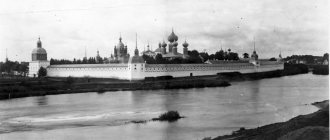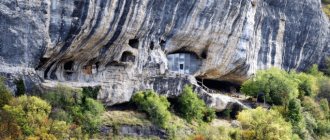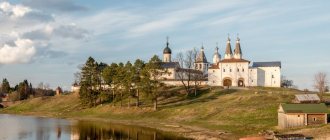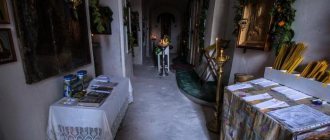Mir
Russia Republic of Mordovia Sanaksar village Nativity of the Mother of God Sanaksar Monastery Map loading in progress…
{"format":"leaflet","minzoom":false,"maxzoom":false,"limit":50,"offset":0,"link":"all","sort":[""], "order":[],"headers":"show","mainlabel":"","intro":"","outro":"","searchlabel":"\u2026 \u0441\u043b\u0435\ u0434\u0443\u044e\u0449\u0438\u0435 \u0440\u0435\u0437\u0443\u043b\u044c\u0442\u0430\u0442\u044b","default":"","import-annotation":false,"width ":"auto","height":"350px","centre":{"text":"","title":"""link":"""lat":54.65306000000000352656570612452924251556396484375,"lon": 43.165559999999999263309291563928127288818359375,"icon":""},"title":"","label":"","icon":"","lines":[],"polygons":[],"circles":[ ],"rectangles":[],"copycoords":false,"static":false,"zoom":8,"defzoom":14,"layers":["OpenStreetMap"],"image layers":[] ,"overlays":[],"resizable":false,"fullscreen":true,"scrollwheelzoom":true,"cluster":false,"clustermaxzoom":9,"clusterzoomonclick":true,"clustermaxradius":80, "clusterspiderfy":true,"geojson":"","clicktarget":"","showtitle":true,"hidenamespace":false,"template":"","userparam":"","activeicon": "","pagelabel":false,"ajaxcoordproperty":"","ajaxquery":"","locations":[{"text":"\u003Cb\u003E\u003Ca href=\"/palomnik/%D0% A0%D0%BE%D0%B6%D0%B4%D0%B5%D1%81%D1%82%D0%B2%D0%BE-%D0%91%D0%BE%D0%B3%D0%BE %D1%80%D0%BE%D0%B4%D0%B8%D1%87%D0%BD%D1%8B%D0%B9_%D0%A1%D0%B0%D0%BD%D0%B0%D0 %BA%D1%81%D0%B0%D1%80%D1%81%D0%BA%D0%B8%D0%B9_%D0%BC%D1%83%D0%B6%D1%81%D0%BA %D0%BE%D0%B9_%D0%BC%D0%BE%D0%BD%D0%B0%D1%81%D1%82%D1%8B%D1%80%D1%8C\" title=\" \u0420\u043e\u0436\u0434\u0435\u0441\u0442\u0432\u043e-\u0411\u043e\u0433\u043e\u0440\u043e\u0434\u0438\u0447\u043d\u044b\u 0439\u0421\u0430\u043d\ u0430\u043a\u0441\u0430\u0440\u0441\u043a\u0438\u0439 \u043c\u0443\u0436\u0441\u043a\u043e\u0439 \u043c\u043e\u043d\u0430\u0 441\u0442\u044b\u0440\u044c\ "" u044b\u0439\u0421\u0430 \u043d\u0430\u043a\u0441\u0430\u0440\u0441\u043a\u0438\u0439\u043c\u0443\u0436\u0441\u043a\u043e\u0439 \u043c\u043e\u043d\ u0430\u0441\u0442\u044b\u0440 \u044c\u003C/a\u003E\u003C/b\u003E\u003Chr /\u003E\u003Ca href=\»/palomnik/%D0%A1%D0%B2%D0%BE%D0%B9%D1%81%D1 %82%D0%B2%D0%BE:%D0%90%D0%BD%D0%BD%D0%BE%D1%82%D0%B0%D1%86%D0%B8%D1%8F\" title =\"\u0421\u0432\u043e\u0439\u0441\u0442\u0432\u043e:\u0410\u043d\u043d\u043e\u0442\u0430\u0446\u0438\u044f\"\u003E\u0410\u04 3d\u043d\u043e \u0442\u0430\u0446\u0438\u044f\u003C/a\u003E: »'\u0420\u043e\u0436\u0434\u0435\u0441\u0442\u0432\u043e-\u0411\u043e\u0433\u 043e\u0440\u043e \u0434\u0438\u0447\u043d\u044b\u0439 \u0421\u0430\u043d\u0430\u043a\u0441\u0430\u0440\u0441\u043a\u0438\u0439 \u043c\u0443\ u0436\u0441\u043a\u043e\u0439 '' 32 1659\u0433\u043e\u0434\ u0443\u0438\u0433\u0443\u043c\u0435\u043d\u043e\u043c\u0424\u0435\u043e\u0434\u043e\u0441\u0438\u0435\u043c\u043f\u043e\u u043f\u0440\u043e\u0441\u044c\ u0431\u0435 \u0436\u0438\u0442\u0435\u043b\u044f \u0433\u043e\u0440\u043e\u0434\u0430 \u0422\u0435\u043c\u043d\u0438\u043a\u 043e\u0432\u0430\u0434\u0432\ u043e\u0440\u044f\u043d\u0438\u043d\u0430 \u043f\u0438\u0441\u0446\u0430 \u041b\u0443\u043a\u0438 \u0415\u0432\u0441\u044e\u 043a\u043e\u0432\u0430,\u043a \u043e\u0442\u043e\u0440\u044b\u0439 \u0434\u0430\u043b \u043c\u0435\u0441\u0442\u043e \u043f\u043e\u0434 \u0431\u0443\u043 4\u0443\u0449\u0443\u044e\u043e \u0431\u0438\u0442\u0435\u043b\u044c. \u041f\u0440\u0438 \u043c\u043e\u043d\u0430\u0441\u0442\u044b\u0440\u0435 \u0434\u0435\u0439\u0441\u0442\u0432\u0443\u0435\ u0442\u0433\u043e\u0441\u0442 \u0438\u043d\u0438\u0446\u0430","title":"\u0420\u043e\u0436\u0434\u0435\u0441\u0442\u0432\u043e-\u0411\u043e\u0433\u043e\u0440\u 043e\u0434 \u0438\u0447\u043d\u044b\u0439 \u0421\u0430\u043d\u0430\u043a\u0441\u0430\u0440\u0441\u043a\u0438\u0439 \u043c\u0443\u0436\ u0441\u043a\u043e\u0439\u043c \u043e\u043d\u0430\u0441\u0442\u044b\u0440\u044c","link":"","lat":54.65306000000000352656570612452924251556396484375,"lon":43.165559 999999999263309291563928127288818359375,"icon":""}],"imageLayers": []}
54.653037; 43.165433
Russia, Republic of Mordovia, Temnikovsky district, Sanaksar village
Sanaksar village, Republic of Mordovia
Russia
Phones:
(83445) 2-91-70, 2-91-02, fax (83445) 2-91-77
Nativity of the Mother of God Sanaksar Monastery
was founded in 1659 by Abbot Theodosius at the request of a resident of the city of Temnikov, nobleman scribe Luka Evsyukov, who gave space for the future monastery. There is a hotel at the monastery
History[[edit]h2>
Founded in 1659 during the reign of Alexy Mikhailovich, three versts from the district town of Temnikov (now Temnikovsky district of Mordovia), on the left bank of the Moksha River. The place for the future monastery was given by a resident of the city of Temnikov, the noble scribe Luka Evsyukov, who invited the first builder and abbot, Abbot Theodosius, from the Staro-Kadoma Monastery, who in 1676, with the blessing of Patriarch Joasaph II of Moscow, built the first church of the monastery in honor of the Presentation of the Icon of the Mother of God of Vladimir. Reverse of a commemorative twenty-five ruble coin with the image of the Sanaksar Monastery.
The monastery got its name from the small lake Sanaksar located under its walls (which in the local dialect literally means: “lying in a swampy hollow near a hill”). Having existed for about a hundred years, the Sanaksar monastery became deserted due to lack of funds and brethren and was assigned to the Sarov desert, at its most flourishing time.
The period of renewal of the monastery is associated with the name of Theodore (Ushakov) (abbot 1764-1774).
By the highest decree of March 7, 1765, Sanaksar was ordered to be called a monastery.
Along with Sarov, the Sanaksar Monastery was the spiritual center of Russia in those years and had many high-ranking admirers in St. Petersburg and Moscow. The holy spring of St. Theodore and a bath in the forest not far from the Nativity of the Virgin Mary Sanaksar Monastery.
On May 27, 1915, Alexander (Urodov) was elected rector of the monastery, who was removed by the brethren in March 1918 and taken into custody; subsequently he was the abbot of the Sviyazhsk Makaryevskaya Hermitage and the abbot of the Sedmiezernaya Hermitage (on September 8, 2001, his relics were found in the village of Sobolev, which were transferred to the monastery).
In October 1929, the monastery was finally closed.
By a resolution of the Council of Ministers of Mordovia dated May 7, 1991, the buildings of the former monastery were transferred to the Saransk diocese. On May 26, 1991, on the day of the Holy Trinity, the abbot of the monastery, Archimandrite Varnava (Safonov), celebrated the first liturgy.
On June 6, 2001, the elder schema-abbot Jerome (Verendyakin), revered by some, who labored in the monastery, died.
On the territory of the monastery there is a sawmill complex and a workshop for the production of candles.
The Sanaksar Monastery is included in the project of the Golden Ring of Russia route.
On October 23, 2014, the Holy Synod of the Russian Orthodox Church confirmed the position of Holy Archimandrite Clement, Bishop of Krasnoslobodsky and Temnikovsky.
Architecture
The process of construction of the stone buildings included in the architectural ensemble of the monastery took a relatively short period of time, so the entire church complex is characterized by stylistic uniformity (a complete absence of eclecticism can be seen), which distinguishes it from most monasteries, the construction of which lasted for several centuries.
Construction took place under the direct supervision of Father Theodore, and then Elder Philaret. In general, the monastery ensemble was formed over the period from 1765 to the 1820s. By the end of the 18th century. Sanaksar already had approximately the appearance that pilgrims visiting it now see.
The Sanaksarsky monastery in Mordovia is a closed space, which is shaped like a trapezoid. There is no fence in the generally accepted sense here. The church territory along the perimeter is fenced with cell buildings connected to each other by a low wall with 3 corner towers.
In front of the main entrance there is a three-tier building of the five-domed Cathedral of the Nativity of the Blessed Virgin Mary, built in the Baroque style, which is the spiritual and architectural center of the entire complex. It is located in front of the central gate and is fenced on all sides by other monastic buildings that line the perimeter of the monastery courtyard.
The cathedral was built according to a plan developed by Hierodeacon Philaret (Bylinin). The temple was decorated with a magnificent carved iconostasis. There are multi-colored paintings on the facades of the building. The interior decoration of the walls, also by Elder Philaret, is made in the Rococo style.
The remaining buildings are located along the perimeter of the church yard around the Cathedral of the Nativity of the Blessed Virgin Mary:
- Directly opposite the temple on the opposite side of the courtyard there is a bell tower (built in 1776), the outlines of which are similar to the silhouettes of the St. Petersburg bell towers and towers of the Alexander Nevsky Lavra.
- The single-domed hospital church, erected in honor of the icon of the Vladimir Mother of God, and the hospital cells are located in the south-eastern corner of the courtyard.
Further visible:
- rector's and treasury cells;
- refectory building;
- fraternal corps;
- buildings for hieromonks and monks.
Construction of the residential premises took less than 15 years (from 1777 to 1790). During this time, a refectory building (1777), fraternal (1779) and hospital cells, a two-story stone building for hieromonks (1781) and a building for monks (1782) were erected.
In 1785–1787 outside the main territory (since the area of the monastery courtyard itself is small), a two-story hotel for pilgrims was built, which was located approximately 100 m from the western monastery wall. It has also survived to this day.
250 m from the Holy Gate there is a church cemetery and a stone Church of the Resurrection of Christ (1805), distinguished by the “metropolitan” architecture. It is located right next to the road and is the first to be seen by pilgrims. This is where the first acquaintance with the Sanaksar monastery begins. The drawings of the cemetery church were made personally by Hieromonk Philaret.
Not long ago, another structure appeared in the cemetery, looking like a gazebo. This building is a chapel built over the burial place of Elder Jerome, who during his lifetime was a fraternal confessor.
In addition, the healing spring with unusually tasty water is of great interest to pilgrims.
How to get there[[edit]h2>
Address
: 431220, Republic of Mordovia, Temnikov Nativity of the Mother of God Sanaksar Monastery.
Phones:
(83445) 2-91-70, 2-91-02, fax (83445) 2-91-77
Directions:
You can get to the monastery either by pilgrim buses, which regularly travel from Moscow, Saratov, Tolyatti, Voronezh and other cities, or on your own by car (from Moscow along Ryazanka) or by train and bus to Temnikov. From the town of Temnikov you can go directly - through the pedestrian bridge (in summer) and then through the field (4 km from the bus station), or by passing transport from the turnoff at the bus station (16 km) to the village of Alekseevki and then on foot to the monastery, or to the monastery itself.
Opening hours and schedule of services
Liturgy at the monastery is celebrated daily at 8:00. On Sundays, an early liturgy is served at 6:00, which takes place in the Vladimir Church. The evening service begins at 18:00, the all-night vigil on the eve of Sundays and holidays is at 17:00.
The days of remembrance of the saints whose relics rest in the monastery are especially celebrated:
- Theodore of Sanaksar - March 4 (death) and May 4 (discovery of relics);
- the holy righteous warrior Theodore - August 5 (glorification) and October 15 (death);
- Reverend Confessor Alexander - August 27 (death) and September 18 (discovery of relics).
The patronal feast of the monastery, the Nativity of the Blessed Virgin Mary, is celebrated with special solemnity on September 21.
Pilgrim[[edit]h2>
Memo for pilgrims:
- The monastery hotels have limited capacity to accommodate pilgrims. Please check with the hotel about available overnight accommodations before your arrival.
- Pilgrims can stay in the monastery hotel for 3 days.
- To check into a hotel you must have a passport.
- Pilgrims are obliged to strictly attend all monastic services and comply with the requirements of the monastery charter and routine.
- Accommodation in the monastery hotel and meals in the refectory are free.
- For other questions, contact the Hotel by phone: 8 - 917 - 990 - 14 - 66
For those who want to work in the monastery
For the glory of God, the following requirements exist:
- Only men at least 18 years of age are accepted.
- You must have a general passport with registration at your place of permanent residence, and it is also advisable to have an insurance policy.
- Strict adherence to the statutes, regulations and other rules of behavior in the monastery is necessary.
- Conscientious performance of assigned work.
- Careful attitude towards the property of the monastery.
- Consumption of alcoholic beverages and drugs is prohibited.
When entering a monastery, it is advisable to have recommendations from your parish priest, confessor or monastery.
Interesting facts and legends
The Sanaksar monastery in Mordovia has existed for more than 360 years. During this time, many miracles occurred, testifying to the holiness of the monastery.
One of the first miracles that human memory has brought to this day dates back to the period of construction of the five-domed Church of the Nativity of the Blessed Virgin Mary.
They say that immediately after the ditches were dug, intended for laying the foundation of the future church, right during the prayer service, a swarm of bees flew in and landed on the place designated for the future altar. This amazing event was a sign from above, foreshadowing abundant grace for the monastery.
The great holiness of Elder Theodore and Admiral Ushakov is evidenced by the fact that when their graves were opened in 1949, the remains turned out to be incorrupt (even the uniform of Fedor Fedorovich Ushakov was in excellent condition). The holy relics residing in the monastery are famous for their miracles of healing. Some pilgrims say that the Queen of Heaven herself sent them here.
In 1991, a miracle occurred, which was witnessed by the first inhabitants of the monastery. They say that when they entered the arched gates of the monastery for the first time after the opening of the monastery, a gray-haired old man came out to meet them, who then headed towards the monastery wall located from the side of the city of Temnikov and, approaching it, disappeared into the air in front of the amazed inhabitants.
Having carefully studied the remaining images of Hieromonk Theodore, witnesses to the event claim that it was he who was the mysterious old man who met them outside the gates of the newly opened Sanaksar monastery.
A few years ago another miracle was recorded. In the Church of the Nativity of the Blessed Virgin Mary, the miraculous icon of the Theodore Mother of God was renewed, which is now located in the altar of the cathedral.
Ancient monastery today
It is important to know: some of the treasures of the temple are the remains of the saints St. Theodore of Sanaksar, the righteous warrior Fyodor Ushakov and the confessor Abbot Alexander. Not far away in the thicket of the forest flows the stream of St. Theodore. Parishioners come to him to drink holy water and also bathe in the fonts.
Currently, there is a hotel on the monastery land, which is intended specifically for pilgrims. You can live and even dine there for free for a few days. And if a parishioner has nowhere to go, then temporary residence will not be denied to him in the labor building.
Ushakov's grave in Sanaksar Monastery
It is necessary to mention the burial of Ushakov. The grave was buried under the chapel and was destroyed by looters during the revolutionary period. But later the admiral’s burial place was discovered and, as proven, the remains remained incorrupt. This is recorded in an official document.
After an examination, the burial was restored and placed under government protection. In 2001, the church canonized Fyodor Ushakov among the righteous, which the admiral certainly deserved.
Large-scale construction
Under Joel, the warm cathedral church and the Church of the Transfiguration of the Lord, located under the bell tower, were consecrated. After 2 years, the monastery was surrounded by a wall. It was 33 fathoms in length and eight arshins in height. It had passage gates and 2 towers at the corners. In one of them, located on the banks of the Moksha River, a chapel was built, in the other - 2 cells.
Period from 1930 to 1991
After the closure of Sanaksary (the monastery in Mordovia), it began to collapse both as a result of raids by marauders and under the influence of natural factors. The first “victim” of the looters was the chapel over the grave of Admiral F. Ushakov. In addition, the monastery cemetery was destroyed and dug up. Vandals knocked down the heads of the churches, defaced the paintings, and set up a stable in the vestibule of the cathedral church.
Later, the buildings of the monastery were transferred to the management of a school of rural machine operators and garages were organized in some of them. This situation continued until the 70s, when the Soviet authorities decided to restore Sanasary as a monument of architectural value.
Abbots
- St. Feodor (Ushakov) (1764 - 1774)
- Joel (Tishkov) (August 8, 1774 - 1778)
- Venedikt (Selivanov) (1778 - December 27, 1788)
- Veniamin (Andreev) (February 14, 1789 - February 13, 1803)
- Filaret (Bylinin) (February 28, 1803 - 1817)
- Nathanael (April 4, 1817 - September 12, 1832)
- Dimitri (September 12, 1832 - September 5, 1848)
- Joasaph (September 27, 1848 – September 23, 1857)
- Xenophon (Florianov) (September 23, 1857 - September 7, 1863)
- Ilariy (Ivanov) (1863 - June 1879)
- Tikhon (Tsiplyakovsky) (September 15, 1879 - December 1884)
- Ambrose (Vorogushev) (1885 - 1893)
- Feodosius (Myasnikov) (1893 - December 1895)
- Augustin (Krivonogov) (1895 - 1915)
- Prisp. Alexander (Urodov) (July 20, 1915 - 1918)









